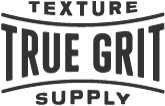KRAFTTONE FOR AFFINITY TUTORIAL

PART 01
GETTING STARTED: PAPER TEXTURES & INKING.
Your KraftTone paper texture templates are pre-loaded with easy-to-use paper texture effects and all the layers you'll need to get started creating and coloring your artwork.
KraftTone includes 5 high-resolution templates in classic comic book format 3969 x 6073px @300ppi in RGB color mode.
Paper Textures Tips:
Converting RGB to CMYK.
Your paper textures use effects that work in RGB mode only. We recommend completing your artwork first before flattening (Document > Flatten) and converting to CMYK (Document > Convert Format > CMYK). This avoids any unexpected color shifts and paper texture glitches.
Customizing Paper Texture Effects.
You can easily control the intensity of the paper textures by adjusting the layer opacity of the Texture and Highlight layers as shown below.

PART 02
COLORING BASICS.
Your KraftTone brushes are designed to faithfully replicate the manual processes used by pre-digital comic colorists from the early 1900's to the 1990's.
All brushes are preset to auto-select the Brush tool and their corresponding CMYK color swatch so there's no messing around selecting tools and colors each time you change brushes.
Get to know your brushes in the video below.
Changing the texture scale.
The brushes are preset with a texture scale of 420% but you can easily adjust the scale in the texture tab of the Brush Editing panel. Simply double-click any brush then adjust the texture as shown below.
The new texture scale will be retained by the brush until you click the Reset button.
NOTE: In Affinity, the lower the scale %, the larger the texture ¯\_(ツ)_/¯.
Settings lower than 100% will cause the embedded texture to pixelate.

CAUTION! Texture scale must match on all brushes used in a formula.
Mismatching brush scales will cause undesirable results so always double check that your texture scale is identical on all brushes used to create a color formula.

PART 03
HOW TO USE THE KraftTone FORMULA GUIDES.
The KraftTone Color System can create up to 374 colors in both dot and line screen tints.
That's a lot of colors so before you dive in, be sure to watch the video below to familiarize yourself with translating the formulas into brush combinations when coloring your work.
PART 04
ADVANCED COLORING, LINE BRUSHES & PRESSURE TINTS.
Now that we know how to use our Formula Guide, let's start adding more color with our dot, line and pressure tint brushes.
OPTIONAL: Pre-visualize colors with the KraftTone Solid Swatches Palette.
The KraftTone Solid Swatches Palette includes a solid version of every KraftTone formula with matching color codes so you can quickly mockup and experiment before rendering your final artwork with your dot and line brushes.


Looking for a little color inspiration?
Check out our Comic Closeups pinboard.
PART 05
ADDING TEXTURE & STAIN EFFECTS.
As if coloring alone wasn't enough, now we get to the really fun stuff... creating custom textures and effects so good, you'll swear you're looking at a scan.
Working with layer masks, we'll create Non-Destructive Destruction™ (you read that right) that leaves your original color layers in tact. Plus you'll learn to add stains, create registration errors and ink absorbtion effects for that little somethin' extra.
Layer mask tips.
If you're new to using layer masks, there's a couple of handy rules to remember.
-
Black Conceals and White Reveals. This means that when you paint black on a layer mask, it hides (or erases) the masked image layer. Painting white reveals the image.
- Painting shades of gray on a layer mask will reduce the amount of concealment the mask creates. This means that if you want to dial your texture effects down a little, try setting your brush to a shade of 50% gray instead of 100% black.
Future proofing registration-errors.
Once you move the Cyan, Magenta, Yellow or Black color layers to simulate a registration error, your brush textures will no longer align with the color you've already laid down. If there's a chance you may want to make changes or add colors later, consider duplicating your Color layer group before creating registration errors. Future you will be grateful!
PART 06
EXPORTING SEPARATIONS FOR SCREENPRINTING.
Don't you just love the tactile immediacy of real ink printed on paper IRL? You're in luck because KraftTone was designed with screenprinting in mind making it super easy to export your separations ready to burn your screens and bring your work into the physical realm.
Watch the video below to see how.
KraftTone Screenprint Tips:
For simplicity's sake we've output our separations without the distressing textures from Part 5 to avoid getting bogged down in complex pre-press techniques.
There's a couple of key points to consider when screenprinting artwork created with the KraftTone Color System.
Choosing the right ink.
CMYK prints work best when using translucent ink. This usually involves adding an extender base to your standard Plastisol inks but as always, consult your friendly local print-shop for their advice and expertise.

Choosing the right paper stock.
If you're looking to replicate the vintage aesthetic created by your KraftTone paper textures, be sure to spend the time to source a good off-white paper stock with visible fibres for maximum effect.
Our recommendation? You really can't beat Dur-O-Tone Newsprint White from French Paper Co.
GOT A QUESTION OR NEED SOME HELP?
Visit our Support Center for fast answers to common questions or to get in touch. We’re here to help!Visit our Support Center
Tutorial artwork by Johnny Dombrowski
Music: Psychopath by Blood Red Sun










